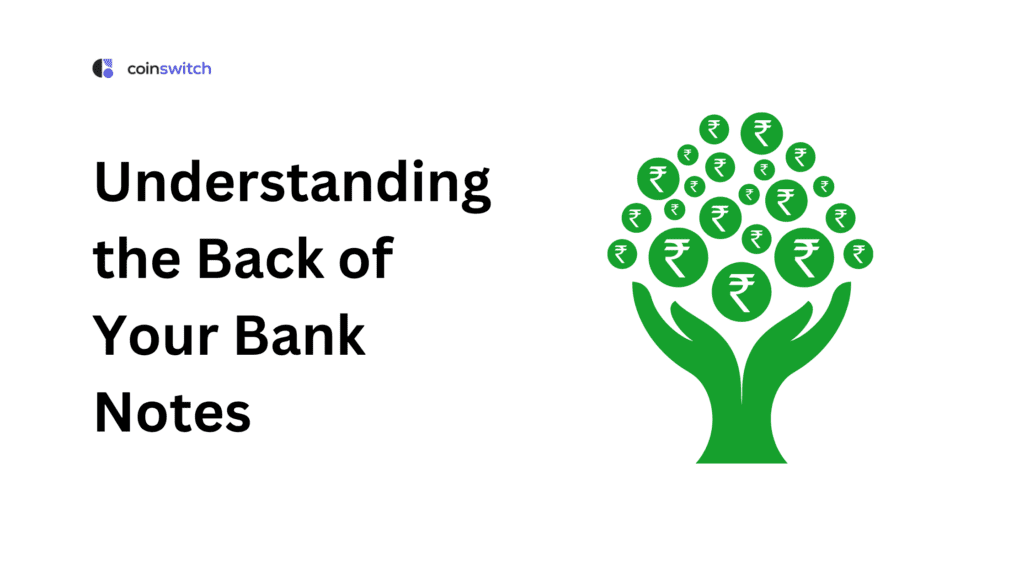Have you ever taken a careful look at the back of your bank notes? On the backside of Indian currency pictures, we can see truly fascinating stories. Every note contains unique information about India’s culture, history, or top spots. The meaning behind each design stands out, from the Ellora Caves on the ₹20 note to the Sun Temple on the ₹10 note. These pictures are not chosen randomly; they are carefully selected to represent India’s achievements and growth.
Understanding these traditions teaches us something about the nation. More than being just a medium of exchange, Indian currency is also beautifully designed and a chronicler of history. The next time you come across a note, turn it over and review what is there. The pictures printed on Indian currency remind us of the country’s culture and encourage us to admire its accomplishments.
The Reverse Side of Banknotes
Besides being a form of exchange, Indian banknotes highlight the country’s cultural heritage, significant scientific developments, and ongoing progress. Indian currency pictures represent the country’s accomplishments in several spheres.
The total value of the 500-rupee banknotes in circulation in India for the fiscal year 2024 was more than 30 trillion Indian rupees. Let’s uncover the interesting details of the reverse images found on ₹1, ₹2, ₹5, ₹10, and ₹20 notes.
Back of Your Bank Notes [All]
₹1 Note – The Sagar Samrat Oil Rig
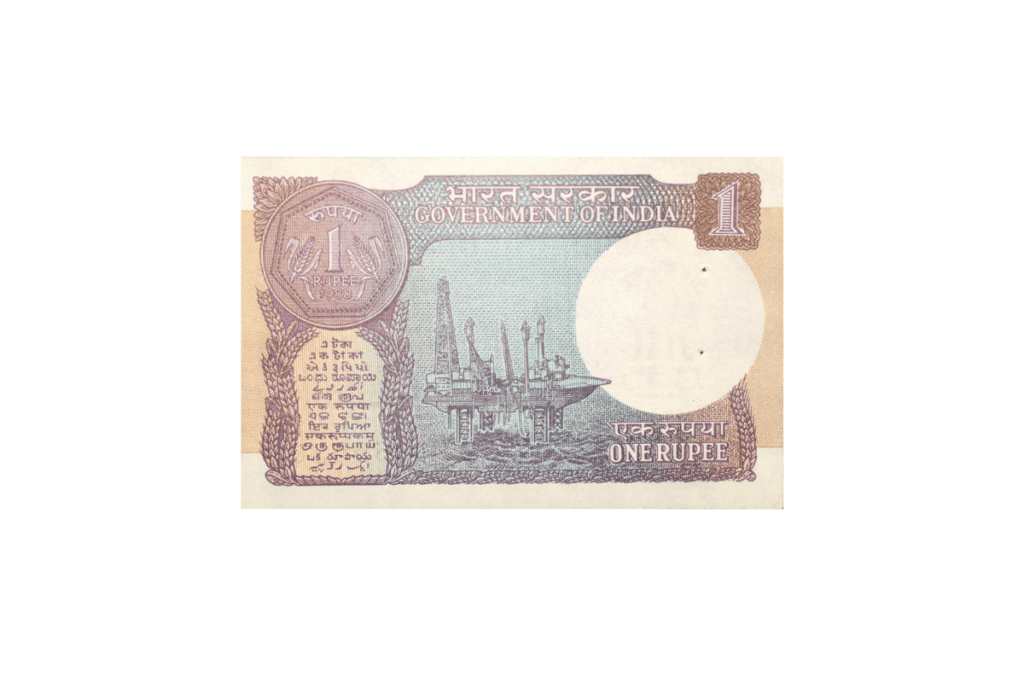
Sagar Samrat oil rig appears on the image for ₹1. It refers to the fact that India produces a significant amount of oil, whereas the Sagar Samrat was a type of jack-up drilling rig. It carried out ONGC’s initial offshore oil drilling near Mumbai in 1974. Then, it started drilling around 125 wells across India. Thanks to the rig, India’s oil exploration advanced. Currently, it continues to operate as a Mobile Offshore Production Unit.
It is used to extract oil from the sea. So, placing this picture on the ₹1 note highlights the role of energy in helping the country grow. It also reflects India’s aim to reduce its reliance on foreign oil suppliers and outlines what ONGC has achieved.
₹2 Note- India’s First Satellite
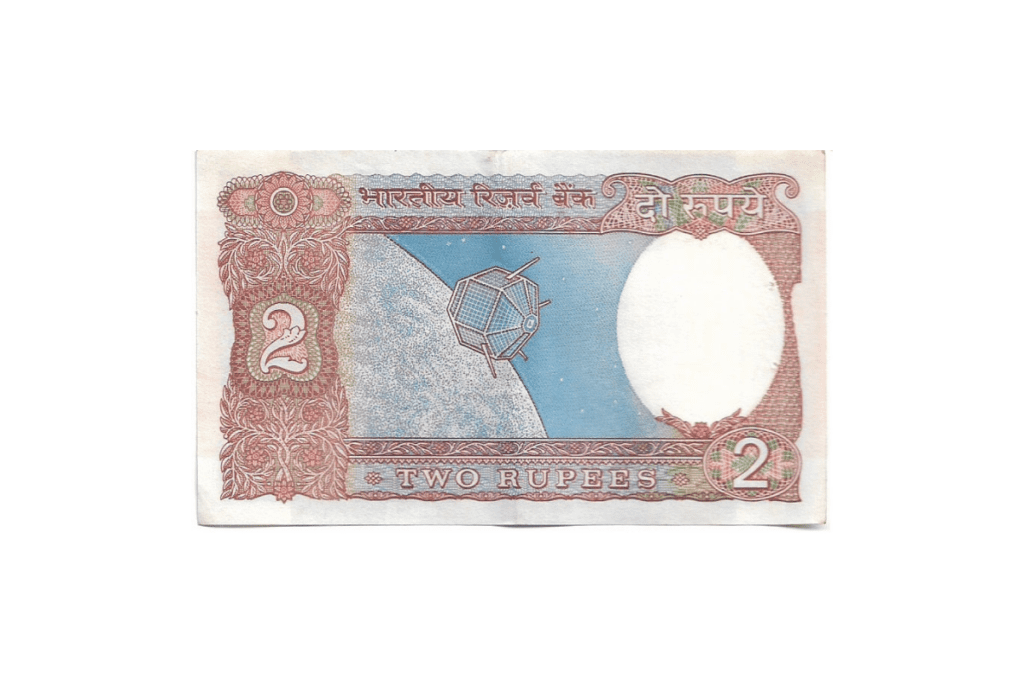
The back of the ₹2 note celebrates India’s first satellite, the Aryabhata, which was launched in 1975. Named after the famous ancient Indian mathematician, the spacecraft Aryabhata became the first Indian mission to be launched into space. Although launched by the Soviet Union, the design and construction of the satellite were carried out solely by Indian scientists at ISRO.
As a result of Aryabhata’s achievements, India was better able to pursue satellite technology and space exploration. Indian currency pictures commemorate this event and showcase the remarkable progress of Indian science. This picture of Indian currency promotes national pride in their achievements in space and reveals the beginnings of India’s journey to outer space.
₹5 Note-Green Revolution
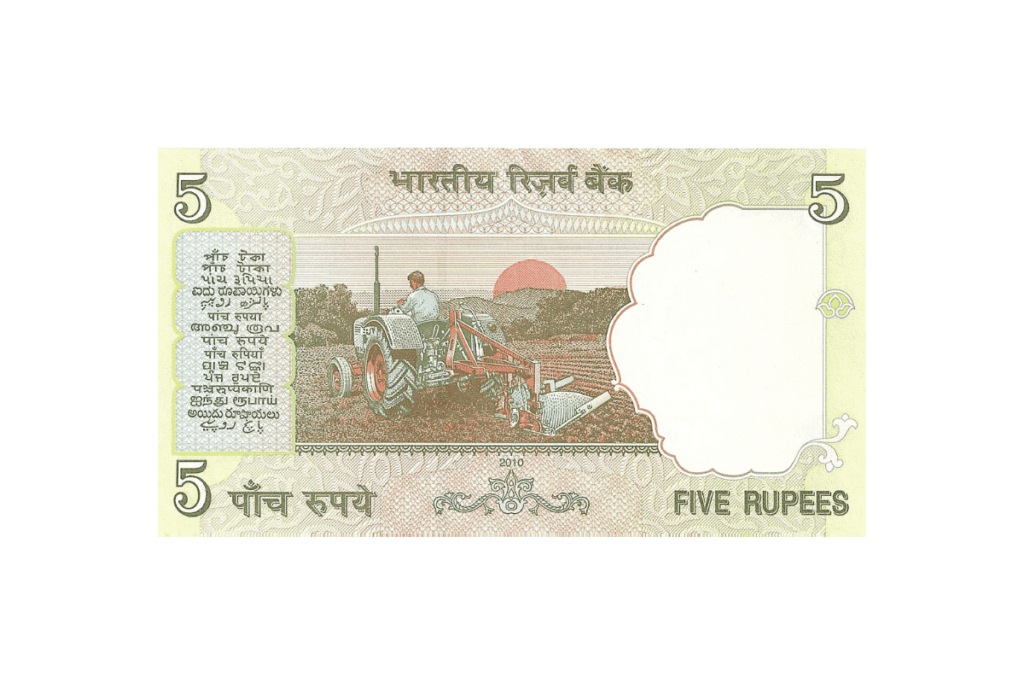
The reverse side of this note shows a farmer, one of the most critical agricultural workers, signifying the Green Revolution. From the 1960s, farmers started using high-yielding varieties (HYV) of seeds, chemical fertilizers, and modern irrigation technologies. By launching this program, India became independent in food grain production.
Typically, the image on the ₹5 note depicts lush green fields and tractors, representing the modern methods farmers use in India. Acknowledging the significant contributions of farmers and scientists who have revolutionized agriculture is essential. The ₹5 note includes an Indian currency picture that explains the strength, inventive spirit, and key role agriculture has in supporting the nation.
₹10 Note- Sun Temple, Odisha
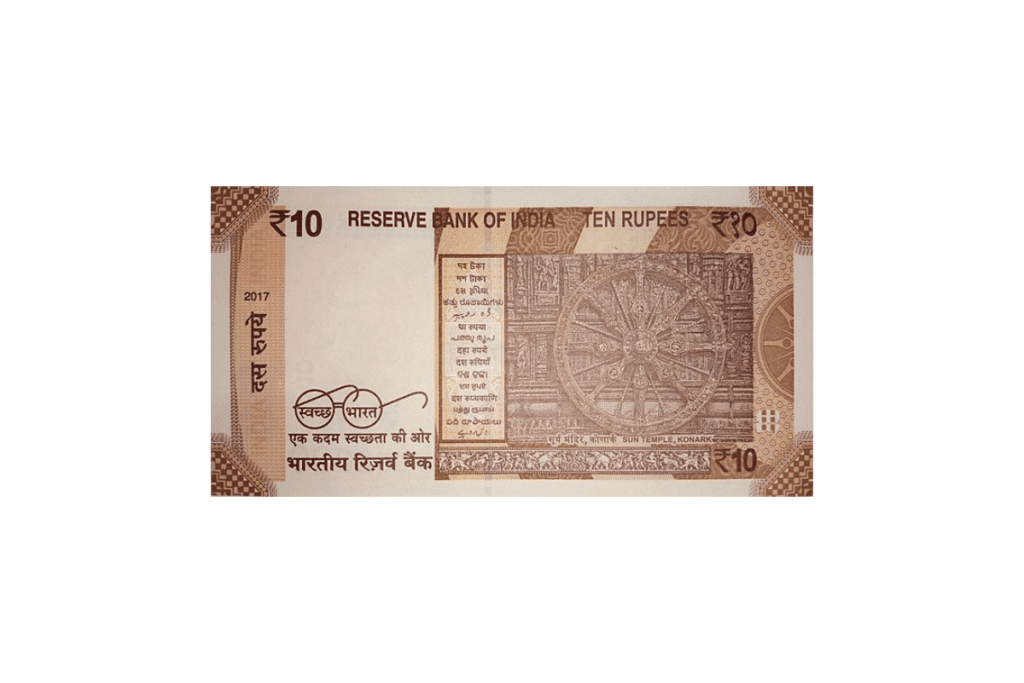
On the back side of the ₹10 note, you’ll see the famous Sun Temple in Konark, Odisha. King Narasimhadeva I built this temple in the 13th century as a giant chariot for Surya, the Sun God. Due to its finely developed carvings, stone wheels, and life-size horse sculptures, this remains a great example of Indian temple architecture.
This currency image, featuring an Indian architectural background, is designed to promote tourism and increase awareness of India’s culture. Odisha’s rich tradition is represented by the preservation of the temple, which is now a World Heritage Site. Including the Konark Sun Temple on the ₹10 note highlights India’s rich cultural heritage and draws attention to its remarkable artistic achievements.
Read More: Understanding Promissory Note and Loan Agreement
₹20 Note- Ellora Caves, Maharashtra
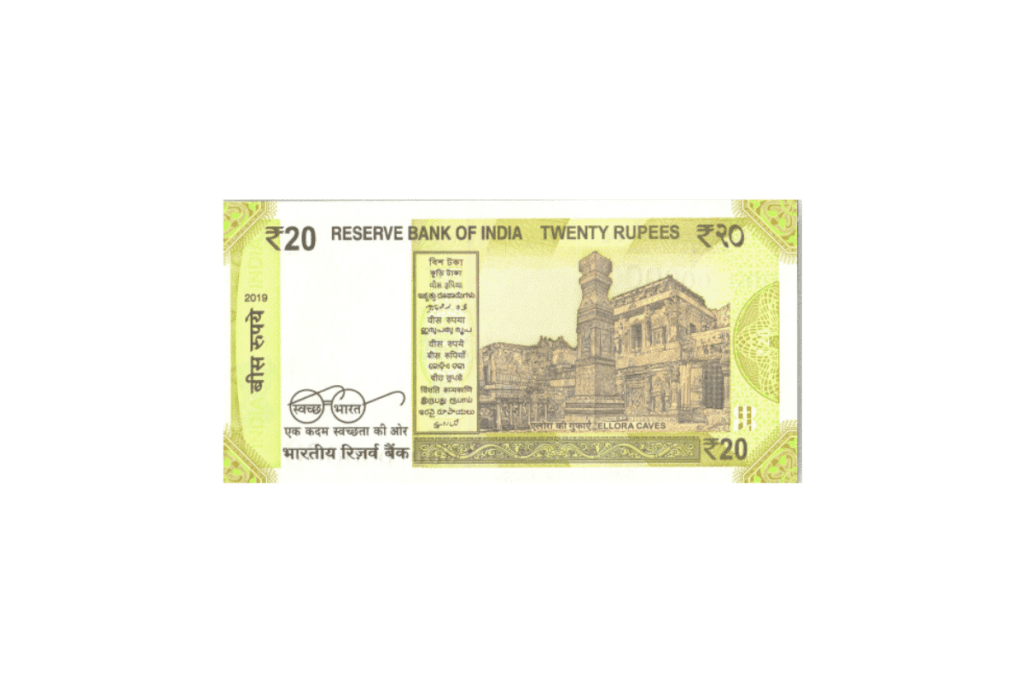
The Ellora Caves, located in Maharashtra, are featured prominently on the reverse of the ₹20 note. Around one thousand years ago, the caves were built for followers of Hinduism, Buddhism, and Jainism to use for worship and meditation. The Great Kailasa, which was excavated from a single monolith, has made Ellora famous all over the world.
The picture represents India, with its diverse groups, peaceful relations among religions, and the remarkable craftsmanship of ancient India. The Ellora Caves have also been honored by UNESCO as a World Heritage Site. These Indian currency pictures show how people from different religions lived together and thrived culturally.
₹50 Note-Hampi, Karnataka
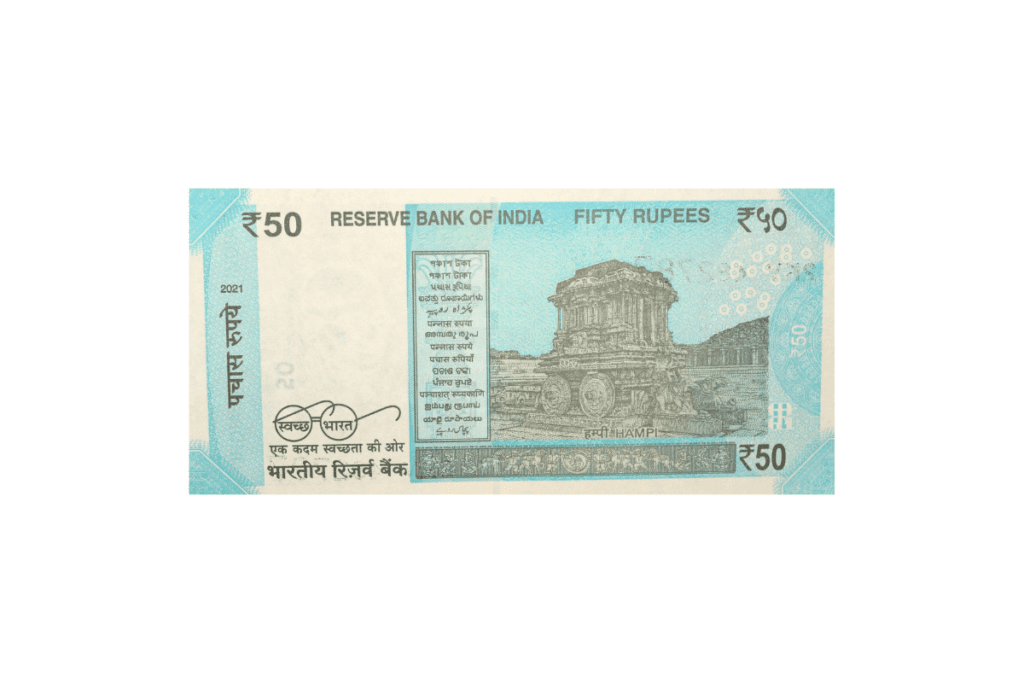
You can see an impressive image of Hampi’s famous Stone Chariot on the reverse side of the ₹50 note. The town of Hampi is a testament to the exquisite architecture of the Vijayanagara Empire, which is a sight to behold.
The Stone Chariot is a renowned monument in India that showcases impressive carvings and intricate architectural detail. The design on the ₹50 note promotes travel to Hampi and teaches people about its historical value. If you are interested in Indian currency pictures, what makes this one special is its vivid design and its cultural significance.
₹100 Note-Rani ki Vav, Gujarat
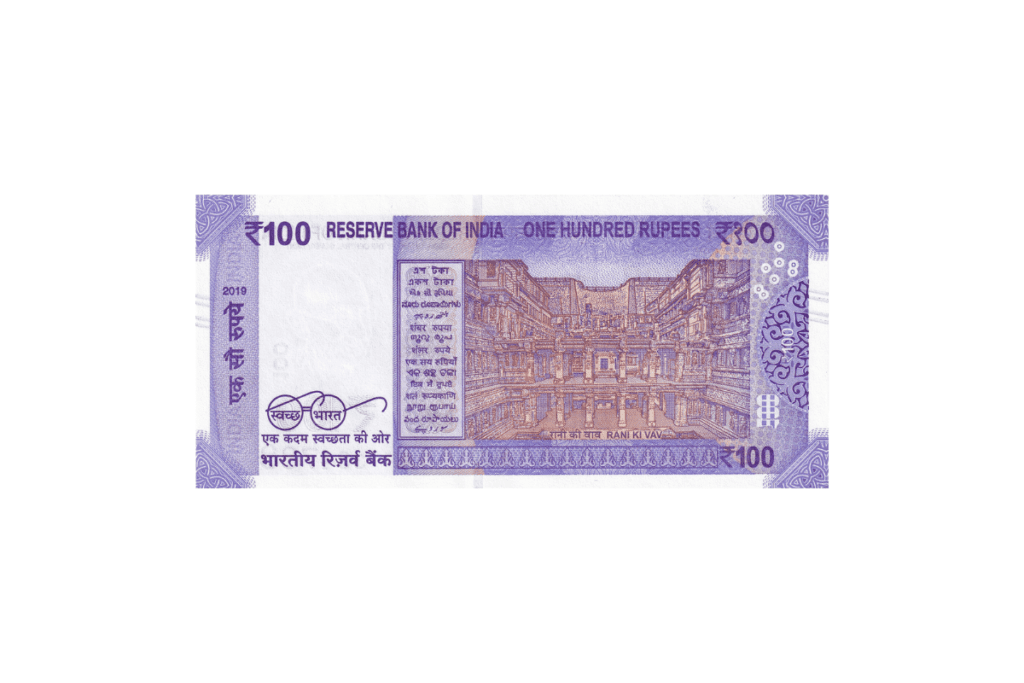
The Rani ki Vav in Gujarat is what appears on the back of the ₹100 note. Queen Udayamati built Rani ki Vav in the 11th century to honor her husband, King Bhima I. It is now a UNESCO World Heritage Site due to its ornate sculptures and intricate stepwell design. Besides being a beautiful sight, the lavender-colored note represents an essential part of history.
Thanks to these Indian currency pictures, people can learn about the country’s exceptional heritage and buildings. The impressive design is also a sign of the skill and creativity of ancient Indian engineering and art.
₹200 Note- Sanchi Stupa, Madhya Pradesh
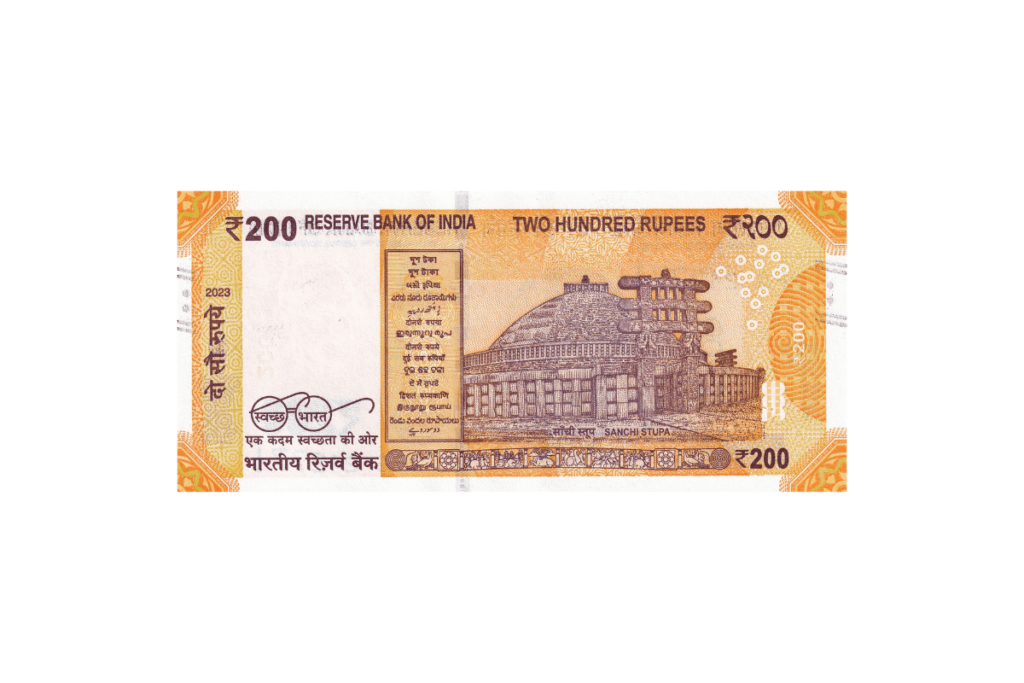
On the back of the ₹200 note is the image of the Sanchi Stupa, India’s oldest stone structure, located in Madhya Pradesh. Ashoka, the ruler of India, built the stupa in the 3rd century BCE, honoring the power of Buddhism in India. Because the note looks bright yellow-orange, it reflects the nation’s surge of energy and history.
On the other hand, the image of the Sanchi Stupa showcases India’s rich history in religion and design. It helps people learn about Buddhism and its philosophical perspectives. When you look at pictures of Indian money, this particular note stands out due to its lovely color and connection to India’s history.
Read More: What is The Difference Between NSE and BSE: Which Is Better?
₹500 Note- Red Fort, Delhi
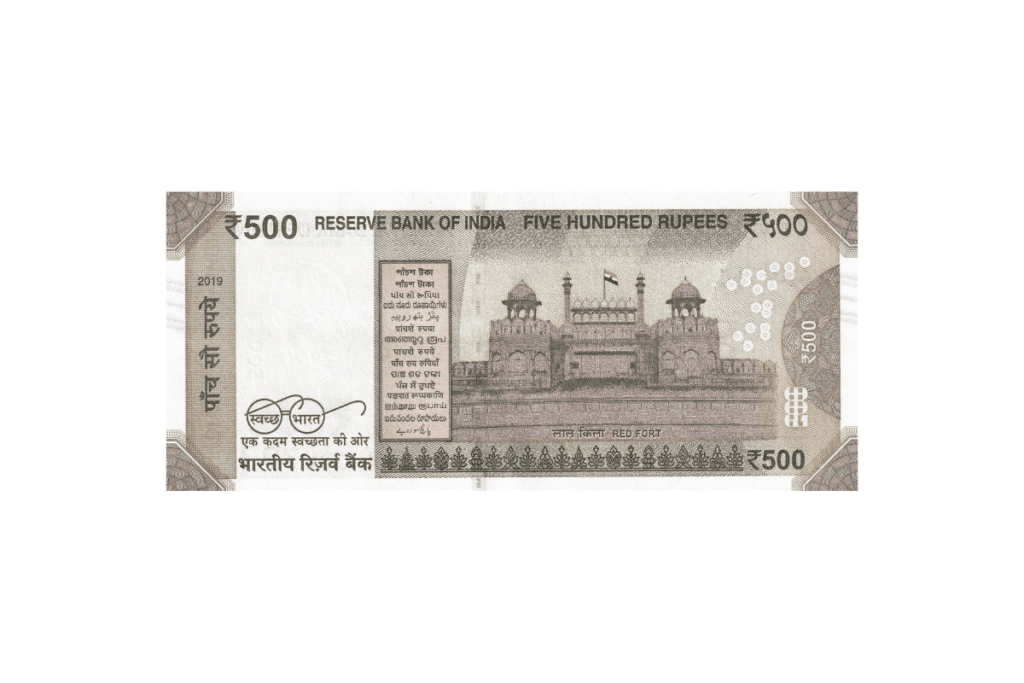
The Red Fort is pictured on the other side of the ₹500 note. It is a well-known monument in Delhi built in the 17th century by Mughal emperor Shah Jahan. Besides being historical, the fort is important to India as the Prime Minister hoists the national flag from its ramparts on Independence Day.
The ₹500 note in stone grey shows both the impressive Mughal buildings and the pride of the Red Fort. If you enjoy Indian currency pictures, this banknote pays tribute to India’s past and the long-lasting beauty of its architecture.
₹2000 Note-India Mars Orbiter Mission
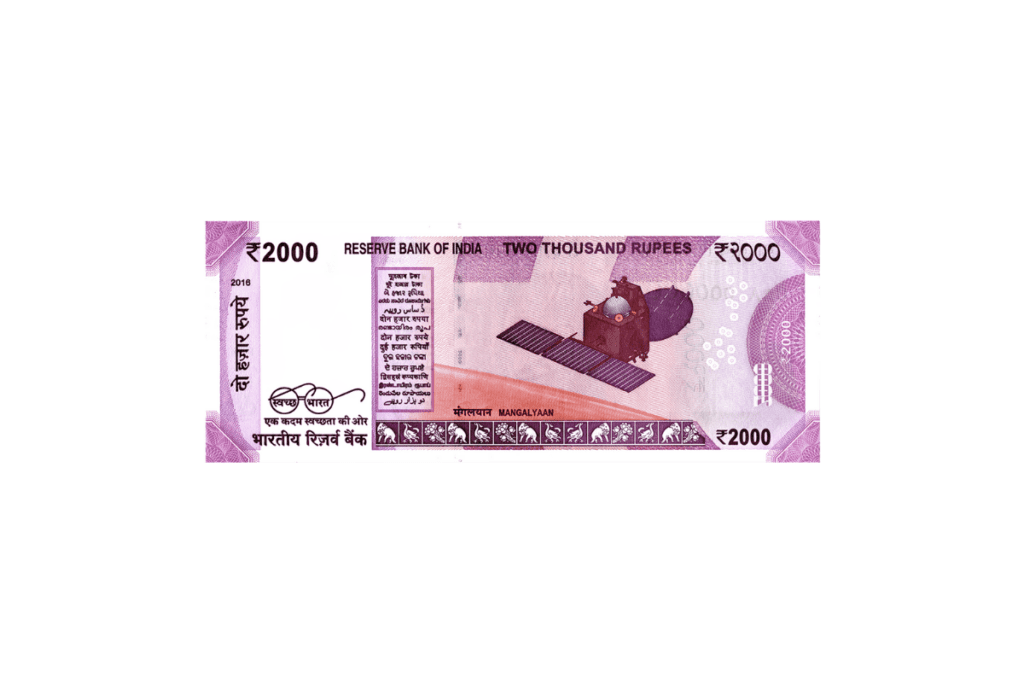
In 2016, the reverse of the ₹2,000 note featured India’s Mars Orbiter Mission (Mangalyaan). In 2013, the space mission by ISRO made India not only the first Asian nation to reach Mars but also the first throughout the world to reach the planet’s orbit in its first attempt. The note features a bright magenta color and showcases India’s advancements in science and space.
Compared to other Indian currency images, only the ₹2,000 note symbolizes India’s achievements in modern space technology. It reflects the country’s self-esteem, creativity, and place among the world’s leading nations for technology and science. The ₹2,000 notes were officially withdrawn from circulation on May 19, 2023. However, the RBI has clarified that these notes are still legal tender.
Conclusion
You will find a tale of India’s rich culture and history on the back of your banknotes. These Indian currency pictures feature famous landmarks, notable architecture, and significant achievements.
They offer a way for people to learn more about the nation and help notes appear unique and significant. Every design serves a purpose. So, the next time you hold a currency note, glance at the back. The images on the currency show the pride and history of India.
FAQs
1. What is on the reverse of Indian currency notes?
The backs of Indian currency notes depict India’s national heritage, growth, and worthwhile achievements. Examples include motifs representing wildlife such as a tiger, an elephant, and a rhino, and also highlighting India’s achievements in science and energy. Every denomination has a special design that represents India’s diversity.
2. What are notes in banking?
A note in banking is a paper form of currency issued by a country’s central bank. These notes are authorized currency for making transactions. Unlike coins, which are usually made of metal, notes are made of material such as paper and signify higher financial amounts.
3. What is the paper used in banknotes?
The special cotton and cotton rag blend used to make banknotes means they will last longer than regular paper. Due to this unique combination, the notes are sturdy and have a distinctive appearance. In some countries, polymer notes help ensure their longer use and greater safety.
4. What are the seven types of currency notes issued in India?
At present, only seven main denominations of currency notes are in use in India: ₹2, ₹5, ₹10, ₹20, ₹50, ₹100, ₹200, ₹500, ₹2000. However, you don’t often see ₹2 and ₹5 notes these days, and ₹2,000 notes have been withdrawn from circulation, though they are still legal tender.
